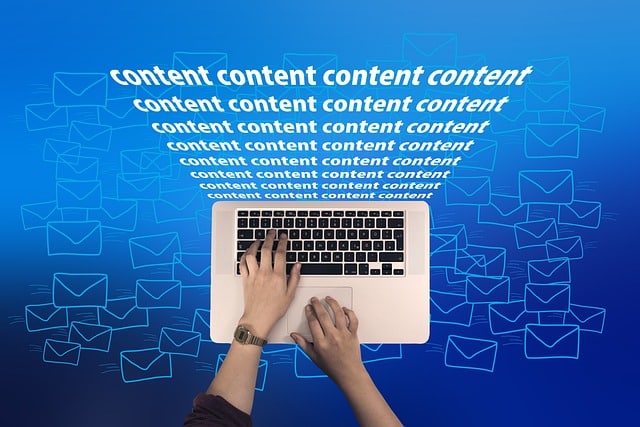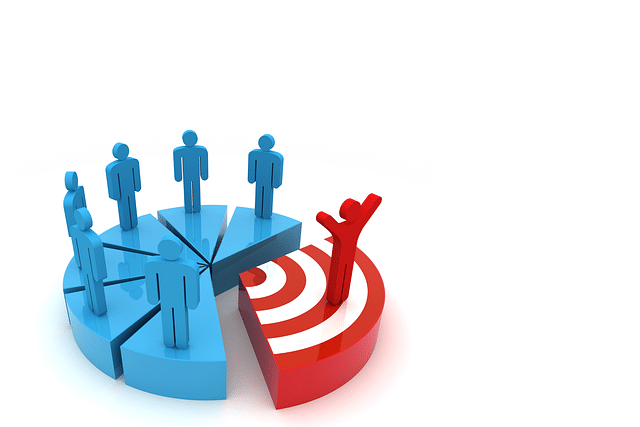
B2C Versus B2B Content: 8 Key Differences
B2C VERSUS B2B CONTENT: 8 KEY DIFFERENCES
B2C and B2B marketing demand different approaches. So, it’s no surprise when marketers and copywriters sometimes get them confused.
Both require professionally written content. But is there a difference in how you present each within your marketing communications?
This article describes the contrasts between B2C and B2B content requirements. You’ll also learn how to handle each while maintaining continuity within your marketing pieces.
8 Key Differences Between B2C and B2B
Business-to-consumer (B2C) marketing targets specific demographics as well as the general public. Business-to-business (B2B) marketing, on the other hand, sells products or services directly to industry participants (companies and corporations).
While similarities exist between B2C and B2B content marketing, several traditional differences remain. Let’s take a look at the most common ones as well as some tricks for telling them apart.
1. Audience
Your target audience determines what type of content and message you deliver. Therefore, it's vital to know who they are before you start writing.
It's helpful to break down individual demographics into personas.

These are fictional characters you develop in your mind that help you visualize your ideal customer or client.
Knowing the persona of your readers will help you target your marketing to decision makers more effectively. However, there are some differences between B2C and B2B audiences.
B2C Audience
The persona of a B2C audience is often simpler than B2B and typically only requires one decision maker during the purchasing process. It could be any individual who has a need for a product or service, including:
- A busy mom shopping for birthday presents
- A DIY home improvement enthusiast
- A high school or college student who needs supplies
- A pet owner looking for healthy treats for their dog
You can break down your target further into demographic groups such as:
- Income
- Geography
- Age
- Gender
- Past purchases
B2C customers are concerned with physical and emotional needs. They want money, status, health, and beauty. The best copywriters focus on these desires and adjust the brand’s messaging accordingly.
B2B Audience
There’s typically more at stake with a business buying decision than with B2C. Most often, your reader will be a key stakeholder directly affected by the purchase. For example:
- Business owners
- CEOs
- C-level executives
- Purchasing managers
- Supply officers
If the transaction goes wrong, these events may occur:
- The company may lose money.
- It can diminish the brand’s reputation.
- Employees may quit the company.
- Someone’s career may be on the line.
B2B clients don’t usually make purchasing decisions based on emotion–like many B2C prospects do. Instead, they focus more on the reliability of products or services offered. They also emphasize a vendor’s reputation and how well they can keep a promise.
For these reasons, content should get to the point early on. It would be best to organize it logically, so the reader isn’t left scratching their head at the end.
Still, it doesn’t necessarily have to be boring. Just make sure to avoid excessive “fluff” while stating your case clearly and concisely.
2. Messaging
As stated earlier, your target audience will dictate your marketing message. Although there can be some overlap, a few competing principles emerge when writing for each type.
B2C Messaging
The most crucial aspect of B2C messaging is search intent. It’s important to realize that a person who types “best refrigerators” into their web browser does so for a reason—they’re wanting to buy a refrigerator!
You must match your content to a prospective buyer’s need for information. In the example above, you should describe precisely how your refrigerator is the best choice compared to others on the market.
Yet, it’s not just about comparisons. You must capture the reader’s attention and keep it there long enough for them to make a purchasing decision. You must demonstrate clearly that the positive emotions of owning the product or service far outweigh its costs.
B2B Messaging
Articulating your company’s value proposition in the customer’s language can be daunting. You can spend countless hours listing all the features and benefits of your offering but still fall short.
Instead, it’s better to convey the overall value of your product or service.
To do this, you must put yourself in the buyer’s shoes. Then ask yourself these questions:
- How will this product or service help improve my company?
- Does it solve a problem, or is it unnecessary?
- How can I mitigate the risks of this purchase?
- Does this vendor offer exceptional value and service?
- Can I get the same thing at a lower cost somewhere else?
The last question is the most challenging. But with the right content, you can overcome the most ardent objections in advance.
3. Content
Content marketing leverages online materials, such as blogs, social media posts, and videos to stimulate interest in your products or services. You can adjust the type of content you create, depending on the audience.
B2C Content
Social media is the most valuable tool for B2C marketing. The focus is not on selling but interacting with customers and prospects. Being part of a worldwide community makes your brand influential while increasing its credibility.
Nike is a prime example. The well-known shoe manufacturer boasts 923 million followers on Instagram and 9.3 million on Twitter.
The company uses social media campaigns to highlight personal stories from brand ambassadors such as college and professional athletes. This strategy draws followers in and eventually showcases Nike products.
You should always write B2C content at the lowest grade level possible. This strategy will ensure that readers understand what you’re trying to get across.

The average attention span online is decreasing. Therefore, you want to avoid bombarding the reader with lengthy messaging.
Instead, it's best to link social media posts to other content, such as videos or guest blogs. Then, introduce a link to your website, where, finally, you can introduce your product on one of its pages.
This type of marketing funnel works well when done correctly. It also makes the buying process easier since it guides the reader gently toward a purchasing decision.
B2B Content
B2B content focuses on facts presented at a professional level. Its job is to explain what you offer businesses to help them succeed. A company’s leader or buying agent is okay with reading extended content if they feel they’re moving closer to this goal.
The primary aim of B2B content is to portray your brand as a leading authority within your industry. One of the best ways to do this is by positioning key people within the organization as thought leaders. Once your brand obtains this level of authority, it’s much easier to convince other professionals to do business with you.
4. Content Formats
As with the content itself, formatting requirements can vary between B2C and B2B. With that said, there is some overlap between the two.
B2C Formats
Copywriters crafting B2C content often use real-time marketing campaigns along with user-generated strategies. These can include:
- Social media posts. Businesses of all sizes use social media to reach customers and prospects. It allows you to monitor your company’s reputation while building a community around your brand. Facebook, Instagram, and Twitter are the top three sites to post content.
- Videos. There are over 2.6 billion users on YouTube. Therefore, it makes sense to take advantage of its promotional value. A copywriter specializing in scriptwriting can help take the content from dull to exciting with only a few keystrokes.
- Product reviews. Going head-to-head with your competitors’ products or services can be a gutsy call. But it becomes necessary in many cases, especially in highly competitive industries. Since potential customers crave transparency, it’s best to respond to every review with honesty and integrity.
B2B Formats
You won’t find any rules written in stone concerning the proper format to use for B2B marketing content. Despite that, here are some examples that should take priority within your company’s communications strategy:
- Blog posts. While blog posts aren’t just for business websites, they offer an effective way to get a brand’s message out to professional buyers. They provide the reader with valuable information about your company and can directly influence purchasing decisions.
- White papers. Much longer than a blog post, a white paper is a report that details your brand’s philosophy concerning a complex topic or issue. For marketing purposes, use white papers to address industry needs while presenting your company as a viable solution.
- Case studies. Businesses utilize case studies as part of a larger marketing campaign. This specialized content highlights how their products or services have helped past customers. It involves telling the story of how a business with a problem used your company to help solve it.
- Press releases. The simplest, most cost-effective way to tell the world about your brand is with a press release. The idea is to alert news outlets about an event your company is sponsoring, or it could be as simple as a new product rollout. Whatever the reason, you can use a press release as a stand-alone advertisement or as an alert to get the media’s attention.
- Requests for proposal (RFPs). Large government and corporate entities often need contractors to fill roles within a larger project. To solicit bids, they post RFPs to alert businesses interested in getting hired. Your job is to create a suitable response, so you can keep a steady flow of work coming into your business.
5. Purchasing Paths
The purchasing path is the journey a buyer takes to become a paying customer. This journey typically involves being aware of a problem and finding a solution. However, it is slightly different between B2C and B2B buyers.
B2C Purchasing Path
This buying journey is often instantaneous. That’s because the typical B2C customer is concerned more with wants than needs.
Due to advancements in shopping cart technology, you can simply click a button and instantly purchase a product or service online. These advancements in order processing allow for impulse buying much faster than in the past.
Your B2C content can mirror this tendency. For example, using calls to action (CTAs) throughout a marketing piece is often better than having only one at the end. The idea is to be ready so your reader can buy from you when reaching an emotional turning point.
B2B Purchasing Path
For B2B buyers, the purchasing path is much longer. They require more information than B2C customers. For this reason, establishing professional relationships is necessary when selling to other businesses.
B2B buyers need to know they can trust your company before they purchase from you. They also need confidence knowing that you’ll treat them well for the long haul.
Another obstacle in the B2B purchasing path is the corporate chain of command. Often, you’ll have several key stakeholders within a company to convince.
However, with the right website and marketing content, each person along the purchasing path will have the necessary information to choose your company over others.
6. Channels
Channels are customer touch points that play a vital role in how your brand interacts with the world. While the truest definition has to do with content delivery methods, it’s much broader in scope than that. It involves any product, service, or medium your content can ride on to propel your brand’s message forward.
B2C Channels
Your corporate website is still the main priority when delivering quality content to your B2C audience. It helps shape the perception of your brand while increasing your credibility with readers.
To go a step further, consider investing in pay-per-click advertising. It’s the one channel with the highest click-through rates, and you can be selective when choosing your target demographics.
While social media sites like Twitter, Facebook, and Instagram are essential, don’t overlook traditional marketing channels. For example, billboards are a fantastic way to advertise your business. They can’t be turned off, and they can be placed on busy highways where everyone can see them.
B2B Channels
In the past, B2B buyers had very few options for obtaining information regarding potential vendors to fill specific needs. However, that’s no longer the case. Many B2B marketers today are utilizing the same channels as their B2C counterparts.
B2B websites are finally taking advantage of pay-per-click advertising. Also, more corporate marketers are learning to rub elbows with high-level execs on sites like LinkedIn. Most businesses are now using the same channels once reserved for B2C marketers.
Still, traditional advertising is alive and well. But the latest trends in B2B marketing signal a move toward omnichannel marketing that was once only reserved for consumer-driven markets.
7. Sales Cycle
A sales cycle is a series of steps your company takes to get a person to buy your product or service.
It varies between B2C and B2B businesses but can also overlap in some cases.

B2C Sales Cycle
B2C content marketing often has a truncated sales cycle. While there can be several steps in the process, the time duration is often shorter than with B2B marketing.
The impulse buying associated with B2C is often responsible. In addition, most purchases are less costly than with B2B. Therefore, those B2C buyers who make a terrible purchasing decision will feel it less.
B2B Sales Cycle
B2B marketing focuses on a longer sales cycle. It typically takes the buyer more time to make a purchasing decision, so you’ll need to provide more content.
B2B marketing also attempts to build trust over a longer period than B2C. Establishing a relationship with your target audience will move you closer to this goal. Your content can convince your prospects that doing business with you is a safe bet.
8. Influencer Marketing
Influencer marketing leverages the power of celebrities and experts to improve brand recognition. However, the influencer doesn’t necessarily have to be a famous person. They simply need to have a positive influence over your target audience.
B2C Influencer Marketing
B2C influencer marketing calls for well-known celebrities to endorse products or services. The unrestrained use of these people doesn’t seem to elicit moral objections. On the contrary, most consumers expect some level of celebrity endorsement in the marketplace.
Still, movie stars aren’t the only ones who are called to be brand influencers. For example, makers of vitamin supplements often use real doctors to endorse their products. They may even have medical personnel on staff to help lend credibility to the brand.
B2B Influencer Marketing
For B2B, influencer marketing takes a more subtle approach. Instead of relying on celebrities, B2B marketers solicit help from industry experts. These professionals will often appear as guests on blogs or podcasts.
B2B influencers are often CEOs, high-level executives, or thought leaders within a given industry. They command respect within niched circles and can draw crowds of people, much like celebrities.
The one distinct advantage B2B influencer marketing has over B2C is credibility. Consumers quickly tire of celebrity endorsements, so the subtle approach of B2B influencer marketing is becoming more favored.
Related Content
- 0 Comment
Subscribe to Newsletter
- How Can SharePoint Be Used To Organize and Disseminate SOPs?
- Planning the Perfect Genealogy Research Trip: A Step-by-Step Guide
- From Silly to Awesome: How Words Change Meaning Over Time
- The Psychology of Font Choice: How Typography Impacts Content Engagement
- How to Distribute SOPs for Maximum Usability


